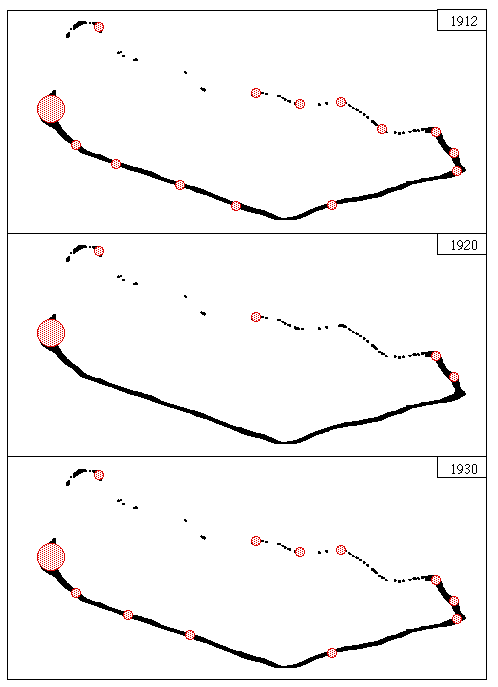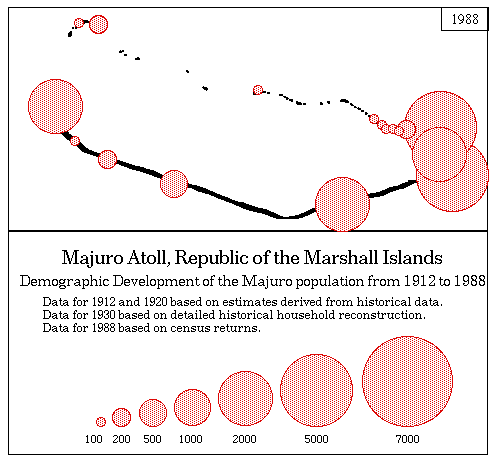Essays on the Marshallese Past
Historical Demography of Majuro

|
The population of 19th century Majuro fluctuated between 1000 and 1500 persons and appears to have been increasing steadily up to a maximum population of 1600 or 1800, if the late 19th and early 20th century estimates are to be believed. The census for 1910 provides a reliable figure of 1400 people for Majuro Atoll, with a dramatic decrease to 1089 in 1912. The pattern of epidemics at the turn of the century as well as the effects of the typhoon of 1905 on the subsistence economy of Majuro cannot be underrated, and may well be responsible for a decrease in the population to the tune of 400 people. In the years following the devastating typhoon of 1918, the population decreased substantially to 526 people on 1920. This was caused by both the direct effect of the typhoon, killing some two hundred people, and the after effects in form of food shortages and inadequate health and housing. It appears that the population did not recover to pre-cyclone
strength until close to the Pacific War. The population figures for 1947 are marred by the fact that there were also people from other atolls who had been stranded on Majuro as a result of the Pacific War. After the war, the US military base and associated governmental facilities made Majuro Atoll the administrative centre for the Marshall Islands as a whole. Subsequently, the population of Majuro increased dramatically, at a rate, which is far greater than the population increase of the Marshall Islands as a whole.
Also after the war, the population centre shifted from Laura to the D-U-D area, and from there gradually to Long Island. These population data, seen through the historical perspective, all help make predictions as to the future population distribution, using population figures provided by the Planning Office. This future population distribution, then, permits the Historic Preservation Office to assess future development trends and threats to the well-being of historic sites well before the development actually takes place.




Bibliographic citation for this document
Spennemann, Dirk H.R. (1998). Essays on the Marshallese Past Second edition.
Albury:
URL: http://marshall.csu.edu.au/Marshalls/html/essays/es-eh-2.html

CONTACT:
Dirk H.R. Spennemann,
Institute of Land, Water and Society,
Charles Sturt University, P.O.Box 789,
Albury NSW 2640, Australia.
e-mail: dspennemann@csu.edu.au

| select from the following... |
|
|
|
|
|
|
|
|
|
|
|
|
|
|
|
| |
|
|



